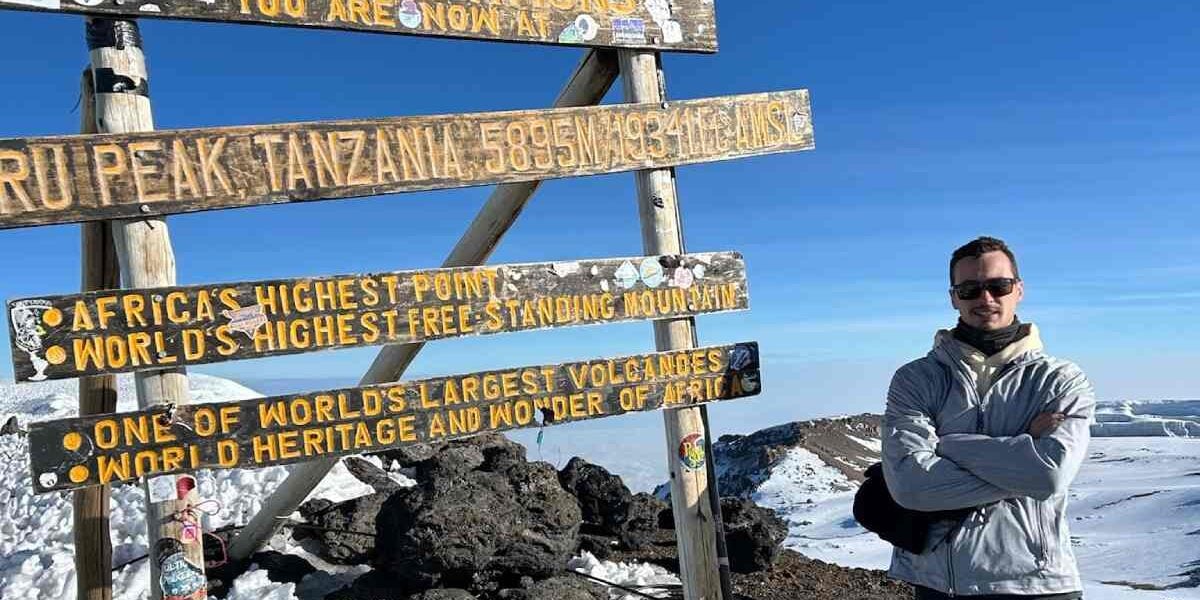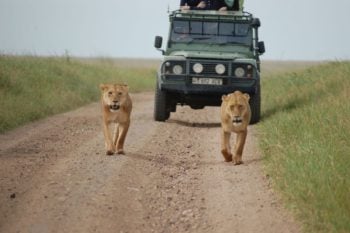
How to Safeguard Your Action-Packed Trips Abroad

However, with every adventure comes inherent risk, making it crucial to have the right coverage to protect against the unexpected. Standard travel policies often exclude high-risk activities, but many providers offer an 'extreme sports rider' or tailored plans for adventurous travelers. Either way, it's essential to carefully review the details to ensure you're fully protected throughout your journey. To help safeguard your next trip, this article outlines key aspects of adventure travel coverage and what to consider before you leave.
Overseas adventure travel is a rapidly growing industry, with millions of people seeking thrilling experiences beyond traditional sightseeing each year. Whether hiking the Grand Canyon, diving in the Maldives, or paragliding in the Swiss Alps, these unique trips offer a world of discovery, allowing travelers to push their limits, explore remote destinations, and connect with nature.
However, with every adventure comes inherent risk, making it crucial to have the right coverage to protect against the unexpected. Standard travel policies often exclude high-risk activities, but many providers offer an 'extreme sports rider' or tailored plans for adventurous travelers. Either way, it's essential to carefully review the details to ensure you're fully protected throughout your journey. To help safeguard your next trip, this article outlines key aspects of adventure travel coverage and what to consider before you leave.

Find the Best International Travel Insurance
- Get multiple quotes and coverage options
- Travel Medical, Trip Cancellation & more options available
- Find the best plan for your needs and budget
What is Adventure Travel?
Adventure travel refers to trips that involve physical activities or exploration in remote, exotic, or wild destinations. Unlike traditional tourism, which focuses on sightseeing and relaxation, these experiences challenge you physically and mentally, connect you with nature, and often carry an element of risk.
This type of travel is ideal for those seeking adrenaline-pumping experiences and the chance to push their limits while discovering new cultures, environments, and landscapes. But it's not just about testing endurance – it's also about forming a meaningful connection with unfamiliar places and the natural world.

Adventure travel can take many forms, from intense outdoor activities like mountain biking, rock climbing, and scuba diving to immersing yourself in different cultures and wildlife.
Whether you're trekking through the Amazon rainforest, hiking to the summit of Mount Kilimanjaro, or going on a safari in the Serengeti, it offers enriching experiences and a unique way to engage with the world around you.
Read More: The Most Popular Travel Destinations in 2025
Why Do You Need Insurance for Adventure Trips?
Insurance is essential for overseas adventure travel because it covers the risks associated with high-risk activities that standard travel insurance typically doesn't.
Most domestic health insurance plans won't cover you outside your home country, and regular travel policies usually only cover leisure activities like sightseeing or fitness, not extreme pursuits like ziplining, scuba diving, or whitewater rafting.
Therefore, if your trip involves high-risk activities, it's crucial to ensure your plan covers them to protect against potential medical and financial risks in an emergency.
For instance, hospital care, medical treatment, and emergency evacuations can be extremely expensive in a foreign country. An airlift from a remote mountain could exceed $20,000, while treatment for a broken leg abroad could cost more than $10,000.
Specialized coverage for adventure travelers helps safeguard you against these unexpected costs, ensuring you're not left with a financial disaster during your adventure. Accidents can happen to anyone, even the most experienced adventurers, so having the right coverage can make all the difference between a minor inconvenience and a life-altering situation.
Read More: The Ultimate International Travel Checklist
Key Coverage Benefits
Overseas adventure travel insurance typically includes several essential protections to ensure you are covered during high-risk activities:
- Medical Expenses: If you're injured or fall ill while engaging in adventurous activities like hiking, scuba diving, or ziplining, this coverage helps pay for medical treatment. Without it, medical costs can escalate quickly, especially in remote areas with limited healthcare access.
- Emergency Medical Evacuations: If you're injured in a hard-to-reach area, this coverage ensures you're transported to the nearest medical facility. This is vital for activities like mountaineering or deep-sea diving, where healthcare may be limited. Read more about medical evacuation insurance.
- Trip Cancellation Coverage: Many policies offer trip cancellation protection, reimbursing non-refundable expenses if you need to cancel your adventure due to illness, injury, or emergencies related to high-risk activities.
- Lost Equipment Coverage: If your gear is lost, stolen, or damaged during your activities, this coverage helps reimburse the cost of replacements. This is particularly important for expensive gear like climbing ropes, scuba tanks, or ski equipment.
- Repatriation Coverage: In the event of a serious injury or death, this coverage ensures your remains are returned to your home country, easing the financial and emotional burden on your family.
- Search and Rescue Coverage: If you need rescue assistance during your outdoor adventures, this coverage helps cover the substantial costs of rescue efforts. Whether you're lost in the wilderness or require help in a remote location, this ensures you're not burdened with hefty fees.
Read More: Travel Health Insurance
Extreme Sports Coverage: An Add-On to Your Travel Policy
While policies for adventure travel typically cover a wide range of high-risk activities abroad, certain extreme sports like skydiving, bungee jumping, or base jumping may require additional coverage beyond what's included in a standard plan.
Extreme sports travel insurance is a specialized add-on designed for travelers engaging in activities that are considered even riskier than typical adventure sports. If your trip includes high-risk activities like skydiving, heli-skiing, or base jumping, it's essential to ensure your policy includes this extra layer of coverage.

Extreme sports coverage typically includes medical expenses, evacuations, and other specific needs related to these high-risk activities. By adding it to your travel policy, you ensure you're fully protected for activities that may fall outside the standard scope of coverage.
It's essential to carefully review your policy to confirm that both adventure and extreme sports coverage are included so you're not exposed to unexpected costs.
What Activities Require Extreme Sports Insurance?
Extreme sports insurance is typically needed for activities that are considered particularly high-risk due to their intensity and danger. These activities often fall outside the scope of standard adventure travel insurance. Here’s a list of activities that usually require extreme sports coverage:
- Skydiving
- Bungee Jumping
- Paragliding
- Heli-Skiing
- Mountain Climbing
- Rock Climbing
- Scuba Diving
- Whitewater Rafting
- Base Jumping
- Hang Gliding
- Cave Exploration (Spelunking)
- Skiing and Snowboarding (in extreme conditions)
- Motorcycle Racing or Off-Road Riding
- Ice Climbing
- Kitesurfing
- Bull Riding
If you plan to take part in any of these activities, be sure to review your insurance policy to confirm that it includes extreme sports coverage, either as an add-on or as part of a specialized plan.
Read More: The Best Family Vacation Ideas for 2025
What Isn't Covered?
It’s important to understand that policies for international adventure travel may come with exclusions and limitations. For example, certain activities may only be covered up to specific limits, such as scuba diving up to a depth of 50 meters or trekking at altitudes below 4,500 meters. Therefore, always check your policy to confirm these limits before embarking on your adventure.
In addition, most policies do not cover the following:
- Activities performed under the influence of drugs or alcohol
- Non-licensed sports or events
- Activities that are illegal in the destination country
Before your trip, ensure the activities you plan to do are legal in your destination and carefully review your policy’s exclusions. Understanding these exclusions is crucial to ensure your coverage meets your needs. If you plan to engage in an activity not covered by your policy, be aware that adding coverage at the last minute may not always be possible.
Read More: Travel Insurance Reviews
The Best Travel Insurance for Adventure Sports
Many policies offer add-on coverage for extreme and adventurous sports, while others are specifically designed for travelers engaging in high-risk activities. Here are a few recommendations from our brokers:
IMG Patriot Plan with Adventure Sports Coverage
Adding the Adventure Sports Rider to the IMG Patriot Plan covers any illness or injury sustained while participating in activities designated as Adventure Sports. These are limited to the following: abseiling, BMX, bobsledding, bungee jumping, canyoning, caving, hot air ballooning, jungle zip lining, parachuting, paragliding, parascending, rappelling, skydiving, spelunking, whitewater kayaking, wildlife safaris, and windsurfing.

Patriot Platinum Travel Insurance
- Maximum limits up to $8,000,000
- IMG pays 100% of medical expenses in-network
- Evacuation due to Natural Disasters & Political Unrest
World Nomads Standard and Explorer Plans
World Nomads covers individuals up to age 70 for over 150 adventure sports activities on its Standard plan and even more on its Explorer plan. The list of covered activities varies depending on your country of residence, so be sure to check that your preferred activity is included.

World Nomads Adventure Activities Travel Insurance
- Coverage for 150+ adventure activities
- 24/7 emergency assistance
- Baggage and gear cover
Top Safety Tips for Your Next Adventure
Preparation is essential when embarking on an epic adventure overseas. Taking proactive steps to ensure your health, safety, and readiness for the challenges ahead will help you fully enjoy your journey while minimizing potential risks. Here are some top safety tips to keep in mind:
Visit Your Doctor Early
Schedule an appointment a month or two in advance to receive any vaccine requirements or recommendations for your destination. Be sure to share your planned activities with your doctor so they can provide tailored advice for your specific adventures.
Train Your Body and Know Your Limits
Many extreme sports and adventures are physically demanding and require unique skills. Make sure you're ready by training before your trip.
While on your adventure, always listen to your body. It's easy to get carried away in the excitement but recognize your physical and mental limits. If you're feeling tired, unwell, or fatigued, take a break – it's better to rest than risk injury, especially when medical help may be far away.
Pack the Right Gear and Emergency Kit
Consult a reputable outfitter when purchasing or renting gear. Have your equipment tested for safety and inspect any rentals carefully. Make sure everything is safe, fits properly, and is suited to your trip.
Don't forget to bring a first aid kit and any other emergency supplies you may need. Ask your guide if there's anything extra you should bring.

Stay Hydrated and Fueled for Adventure
Adventure activities can be physically demanding, so it's essential to stay hydrated and nourished. Carry a refillable water bottle and pack energy-rich snacks like nuts or granola bars to maintain your energy levels throughout the day. Avoid dehydration by drinking water regularly, even if you don't feel thirsty.
Share Your Itinerary with Loved Ones
Share your itinerary and travel plans with trusted family and friends. If your schedule changes, make sure to let them know. That way, if an emergency arises, someone will know where you are and can help get you assistance more quickly.
Prioritize Safety and Follow Guidelines
Learn about the laws, safety rules, and risks of the country you're visiting and the activities you'll be doing. Always choose a trusted and experienced guide. Also, familiarize yourself with the emergency procedures at your destination, such as the nearest hospital and emergency contact numbers.
Check Weather Conditions Regularly
Extreme weather conditions can significantly impact outdoor adventures. Always check the weather forecast before embarking on outdoor activities, especially in areas prone to sudden weather changes. If conditions seem unsafe, it’s better to postpone or seek shelter than risk injury.
Understand Wildlife Safety Risks
If you're traveling to areas with wildlife, educate yourself on the species you may encounter. Know how to interact with wildlife safely, and always follow the guidance of a professional guide when in wildlife-rich areas. Staying informed will help minimize risk and enhance your experience.
Keep Documents Safe and Accessible
Bring important documents like your passport, insurance cards, emergency contacts, and vaccination records. Store them in a waterproof case to keep them safe from water and damage.
Read More: The Top 10 Countries for Solo Female Travelers
Protect Your Adventures Today!
Adventure travel is all about embracing the thrill and exploring the unknown, but don’t let safety take a backseat. As you prepare for the trip of a lifetime, make sure you’re protected with the right coverage.
That way, you can focus on the excitement and create unforgettable memories, knowing you’re covered for any unexpected twists along the way. Don’t wait – explore our top plans today and get ready to embark on your next adrenaline-filled journey with confidence!
Read More
About the Author:Sophie Pettit, Head of Content at International Citizens Insurance, brings a wealth of experience in content creation, strategy, and management within the expat and travel industries. Originally from the UK, she worked as a lifestyle journalist in Hong Kong and now resides in the Netherlands, supporting the team in creating compelling content for fellow global nomads.




